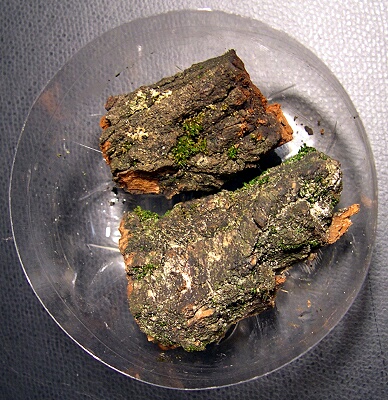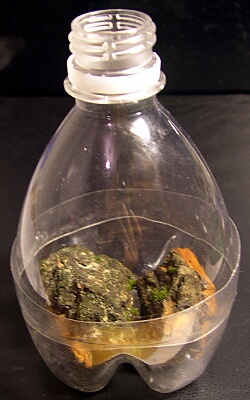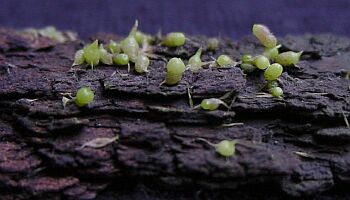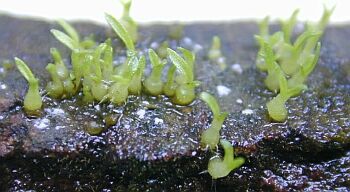Germination on bark
Backgroundstory to this idea
A few months ago we read Anton Hefkas book "Cattleyen und Laelien" where he explains how he germinated about 100 years ago (1900) thousands of Cattleyas and Laelias at the botanical garden Schönbrunn. This was the procedure he used: "Put some crocks in a clay pot till they reach one third of the pots volume. Next, put sphagnum moss on the crocks till the pot is filled for two thirds. Last but not least fill fresh spruce saw dust pulp in the pot and disperse the seeds on the surface of the spruce pulp. Place the pot in a bright but not sunny area in your greenhouse and water them every day."
We tried to reproduce this methode but we were not able to germinate seeds this way. After this failed experiment we put some seeds of Pleione spec. and Epidendrum radicans on a piece of bark and they germinated very good. Within a few months we had very healthy seedlings. Because of the successful symbiotic germination we tried to reproduce it with different seeds but we were not able to repeat a successful germination. The seeds become protocorms but the neccessary fungus is not always present and so the protocorms die after a while.
The technique we used for our successful germination on a bark
Before we can start to sow the seeds we have to collect some fresh barks from a local forest. After that we cut the bark into small pieces (about 5 x 5 cm) and put them for one hour in rain water. Next we dispersed the seeds on the moist barks and placed them in a modified plastic bottle as you can see on the picture below.


Further care
Place the bottle (containing the barks) on a bright but not sunny area and water the barks as soon as the bark start to become dry. It is important to let the bark dry out a little bit before watering them again. We water them every morning.


Author: Thomas Ederer
